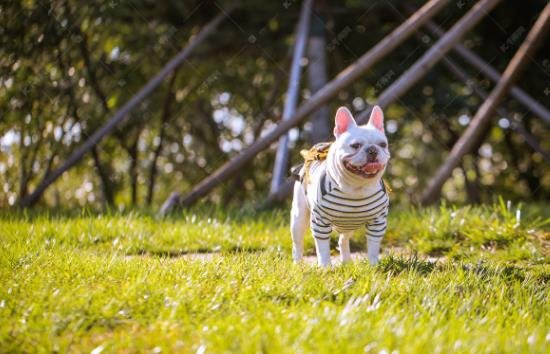
How to Train Your Dog Not to Pee and Poop in the House
Understanding why dogs may pee and poop in the house is a fundamental step in effective training. There are several common reasons for this behavior. Insufficient training is often a primary cause. Puppies, for example, might not yet understand where and when it is appropriate to relieve themselves. Consistent and patient training is essential to help them learn these boundaries.
Training your dog to eliminate outside rather than in the house requires consistency, patience, and positive reinforcement. Here are some steps to help you with the process:
### 1. Establish a Routine
– **Feeding Schedule**: Feed your dog at the same times each day. This helps to regulate their elimination schedule.
– **Regular Potty Breaks**: Take your dog outside frequently, especially after meals, naps, and playtime. Young puppies need to go out every couple of hours.
### 2. Choose a Designated Spot
– **Specific Area**: Always take your dog to the same spot in your yard or a designated area for them to eliminate. The familiar scent will encourage them to go there.
### 3. Use Commands
– **Consistent Phrase**: Use a consistent phrase or command like “Go potty” when you take your dog to the designated spot. They will start associating the command with the action.
### 4. Positive Reinforcement
– **Praise and Rewards**: When your dog eliminates outside, praise them enthusiastically and give them a treat immediately. Positive reinforcement helps them understand they did the right thing.
### 5. Supervise and Confine
– **Close Supervision**: Keep a close eye on your dog when they are inside. Look for signs they need to go out, such as sniffing around, circling, or whining.
– **Crate Training**: Use a crate if you can’t supervise them. Dogs are less likely to eliminate where they sleep. Make sure the crate is the right size—just large enough for them to stand up, turn around, and lie down.
### 6. Handle Accidents Calmly
– **Clean Thoroughly**: If your dog has an accident inside, clean it up thoroughly with an enzymatic cleaner to remove any scent that might attract them back to the same spot.
– **No Punishment**: Avoid punishing your dog for accidents. It can create fear and anxiety, making the problem worse.
### 7. Be Patient and Consistent
– **Consistency**: Stick to the routine and training methods consistently. It may take several weeks for your dog to be fully trained.
### Additional Tips
– **Limit Water Before Bed**: Restrict water intake a couple of hours before bedtime to help them stay dry overnight.
– **Nighttime Breaks**: If your dog is young, you may need to take them out once during the night until they can hold it longer.
With time, patience, and consistent training, your dog will learn to eliminate outside, keeping your house clean and odor-free.
In summary, dealing with accidents and setbacks requires patience, effective cleaning strategies, and continuous evaluation of training methods. By fostering a positive and consistent training environment, you can successfully teach your dog to avoid peeing and pooping in the house, creating a harmonious living space for both you and your furry companion.
American Dingo animal behavior Budget Tips canine behavior Canine Care Canine Health Dehydration dog age dog behavior Dog Breeds dog care Dog Care Tips dog exercise dog flea treatment Dog Food Dog Grooming dog health dog nutrition dog ownership Dog Sleep Tips Dog Training Dog Wound Care Family Pets First Aid Giardia Prevention Healthy Pets Hunting Dogs newborn puppy care Parasites in Dogs Pet Care Pet Care Tips Pet Health Pet Safety pet tips pet training Positive Reinforcement Potty Training prevent flea bites Puppy Care puppy health Puppy Training Rabies in Dogs Training Tips veterinary advice Veterinary Care
-
 How to Successfully Potty Train Your Dog in Singapore
2 views
How to Successfully Potty Train Your Dog in Singapore
2 views -
 What It’s Really Like to Travel with a Guide Dog
1 view
What It’s Really Like to Travel with a Guide Dog
1 view -
 Are Cocker Spaniels Good With Cats? Tips for a Smooth Introduction
1 view
Are Cocker Spaniels Good With Cats? Tips for a Smooth Introduction
1 view -
 Effective Techniques to Massage Gas Out of a Dog
1 view
Effective Techniques to Massage Gas Out of a Dog
1 view -
 How to Identify a Mountain Cur
1 view
How to Identify a Mountain Cur
1 view -
 Complete analysis of dog body language, become a master of understanding dogs!
1 view
Complete analysis of dog body language, become a master of understanding dogs!
1 view -
 Why Do My Dog’s Farts Smell So Bad?
1 view
Why Do My Dog’s Farts Smell So Bad?
1 view -
 How to Attract a Dog to a Pee Pad: Effective Tips and Techniques
1 view
How to Attract a Dog to a Pee Pad: Effective Tips and Techniques
1 view -
 How many years can a dog accompany you?
1 view
How many years can a dog accompany you?
1 view -
 How do I train my dog on a budget?
1 view
How do I train my dog on a budget?
1 view










Leave a Reply
You must be logged in to post a comment.